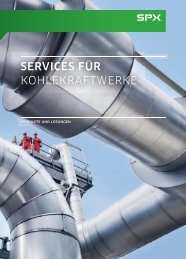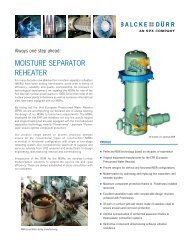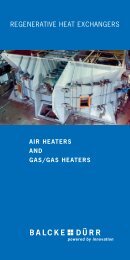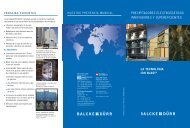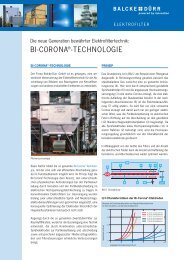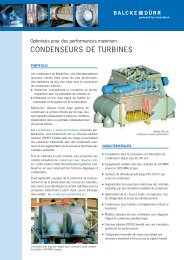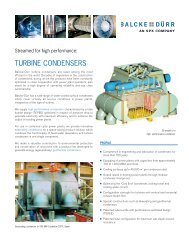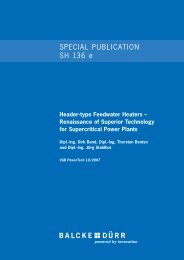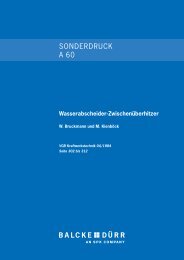Compact Heat Exchanger
Compact Heat Exchanger
Compact Heat Exchanger
You also want an ePaper? Increase the reach of your titles
YUMPU automatically turns print PDFs into web optimized ePapers that Google loves.
2<br />
PROviDinG SOLUTiOnS fOR inDUSTRiAL PLAnTS<br />
Regenerative <strong>Heat</strong> <strong>Exchanger</strong>s<br />
Very important energy savings can be achieved in the case of steam boilers and industrial furnaces by the use of<br />
Regenerative <strong>Heat</strong> <strong>Exchanger</strong>s for the recovery of flue gas heat normally discharged into the atmosphere, and by using<br />
this to preheat the air for combustion.<br />
The Lugat <strong>Heat</strong> <strong>Exchanger</strong> of compact design has been used for this purpose for many years, and the rugged construction<br />
has proved to be very satisfactory for all fuels and operating conditions. Carefully designed heat transfer plates are<br />
arranged in sectors of the slowly rotating rotor. During rotor rotation the flue gas heat is alternately stored by the heating<br />
plates and transferred to the incoming air. This operating principle provides high heat transfer efficiencies within a<br />
most confined space.<br />
The <strong>Heat</strong>ing Surface<br />
The heating surface consists of metal plates of 0.5—1.0 mm thickness which by virtue of their special shape achieve<br />
a high heat transfer in line with the lowest possible resistance. On the cold end the plates are arranged in boxes of<br />
300 mm height, which can be easily replaced. In case of great corrosion-risk the heating plates are made of a special<br />
material or are provided with a durable enamelling.<br />
Rotor Bearing Arrangement<br />
The rotor is seated in two self-aligning roller bearings. The bearing housings are cooled by water to allow a dissipation<br />
of the incoming heat from shaft and bearing area.<br />
Drive<br />
The rotor is normally driven by a geared motor via a pin rack, but it is also possible to apply any other type of drive unit,<br />
as for example, steam or compressed air turbine.<br />
Seals<br />
The seals prevent the transfer of combustion air into the flue gas. The sealing plates are flexible to permit an adaptation<br />
to the rotor distortion under changing temperature conditions at different loads.<br />
Auxiliary Equipment<br />
Optimal fuel utilization has become an urgent challenge<br />
due to the continuous rise in energy prices and the current<br />
requirements on CO 2 minimization.<br />
We recommend increasing the efficiency of steam boilers<br />
and industrial furnaces through lower flue gas temperatures,<br />
thus improving operating economy. This can<br />
be done both on new and older plants that have been in<br />
operation for many years.<br />
Depending on the operating conditions involved, the heat exchangers can be quipped with auxiliary devices, such as a<br />
blowing device, a fire alarm system, an extinguishing device, a washing device and a rotation control.



